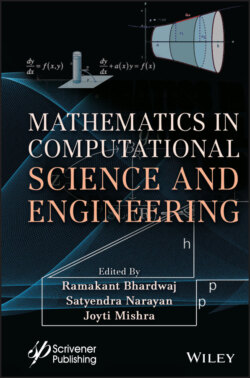Читать книгу Mathematics in Computational Science and Engineering - Группа авторов - Страница 53
2.8 Scheme of Resistivity Data Presentation
ОглавлениеWhen monitoring in-situ processes, a number of essential questions arise. What is the minimum signal amplitude that can be detected? How should we quantify detectability? What is the minimum signal repeatability? These are vital questions from the monitoring point of view and must be dealt with quantitatively. We attempt to answer some of these questions using numerical model responses and by defining measurability and detectability consistently.
The issue of detectability of a signal associated with an anomalous zone is related to the depth of exploration. For a given target, this is usually defined as a maximum depth that may be detected with a given electrode configuration. Ward [30] noted that the depth of exploration is a function of several parameters such as sensitivity to inhomogeneity & bedrock topography, lateral effects, general topography, dip, etc., and signal-to-noise ratio. As these issues were not studied systematically for a wide range of electrical resistivity models, he did not define different electrode configurations in terms of detectability. Oldenburg [31] also noted that the without studying a wide range of models, there is no analytical basis for considering one electrode configuration over another for resolving model parameters. However, the approach herein is somewhat different, using a mathematical basis to evaluate placement of a current dipole at depth in the proximity of an anomalous zone to be monitored, which increases the amount of current flux in the zone, leading to a better detectability. Other issues affecting detectability must be studied using a forward model on a case-by-case basis to optimize the array characteristics.
Narayan [3] defined the term “measurability” in terms of percent difference of the measured signal with respect to the background. This gives us an idea as to the signal levels that must be achieved on top of the background signal in order for an anomaly to be measured. Available commercial equipment, for example, is supposedly capable of measuring signal variations with an accuracy of 0.1% of background. The measurability is therefore 0.1% and is equipment-dependent. As an indicator of target detectability, this measure is misleading on two counts. First, it is unlikely that the measurability applies over the entire range of the instrument’s response. For example, an instrument may measure ±1 mV on top of a 10 V background signal but cannot measure ±1 µV on top of 10 mV background. Narayan [3] quantified the term “detectability” on the basis of magnitude of the signal observed with respect to the background and measurability of the signal together. Second, cultural and to some extent instrumental noise is usually specified in terms of an absolute voltage (e.g., ±10 mV). Therefore “detectability” has both an absolute and a percentage expression, either of which may be required in a given situation. As a result, we have presented detectability in both forms, percentage and absolute. If we know the geologic noise characteristics and magnitude, we may be able to put a threshold limit, defining the minimum signal to be detected with respect to the anomaly over the zone to be monitored. This concept has been used to develop a design chart of detectability for a hypothetical landfill model [3].
